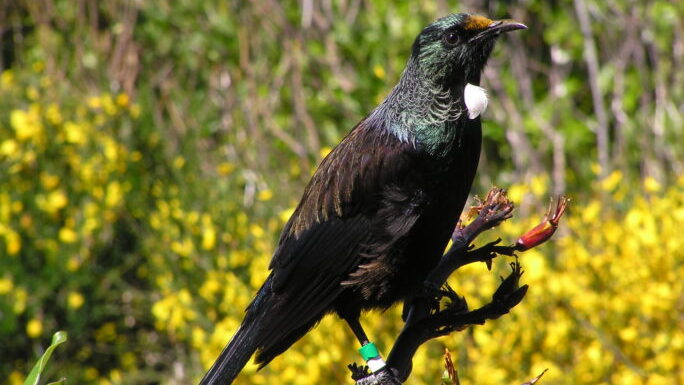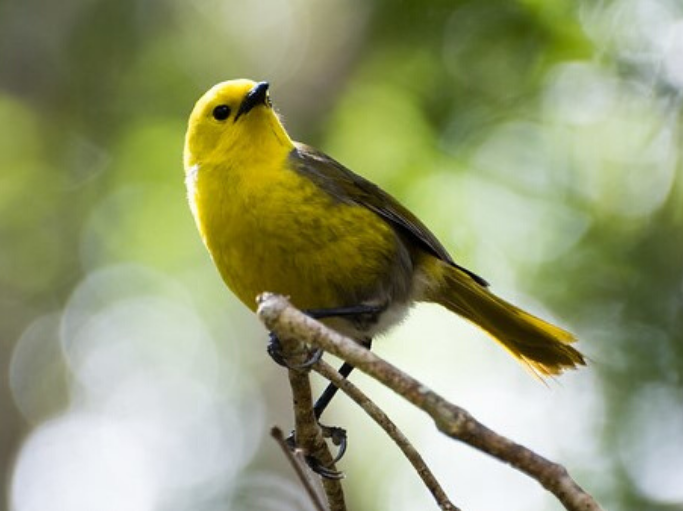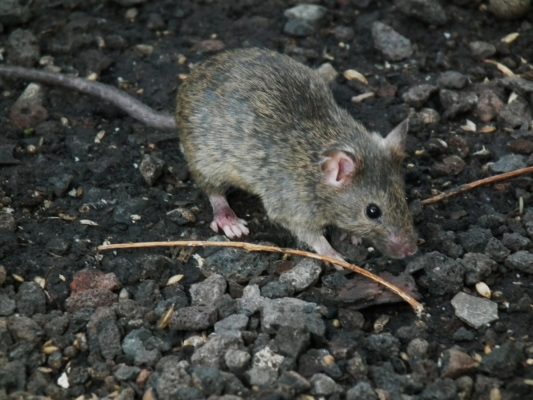Scientific research often involves painstaking, meticulous measurement, sometimes repeated over a period of years before the work is completed – then it has to be analysed, written up equally meticulously and an academic publisher found. Not everyone has the patience or the persistence, but the results of such attention to detail can be fascinating and revealing.

Two such long-term research projects were carried by Department of Conservation scientists Colin O’Donnell and Joanne Hoare; one a study of skinks in the Eglinton Valley, Fiordland from 2004-2009 and the other a study of the benefits of long-term integrated pest control for forest birds in the Landsborough Valley, located at the head of the Haast Valley on the South Island’s West Coast. This research covered an even longer time period, from 1998-2009. The results of the 12-year study were published in the New Zealand Journal of Ecology three years later, in 2012.
In the Landsborough Valley both ground and aerial predator control are used. Continuous trapping was carried out to control mustelids and pulsed aerial application of the toxin 1080 to control rats and brushtail possums. The aim was to protect native birds in the valley including mohua which are particularly vulnerable to introduced predators during the breeding season as they nest in tree-holes. If discovered by a predator, the sitting female has no escape route. Not only eggs and young, but adult breeding females are lost, leading to a skewed adult population of predominantly males.

The researchers expected populations of hole-nesting species to recover with long-term predator control and populations of other, less vulnerable bird species to be maintained. They also investigated whether the annual average counts for mohua and kaka were a good predictor of the numbers of other forest bird species.
Mohua are particularly vulnerable to stoat predation, while previous research suggested that kaka numbers were highest in the absence of possums and declined with increasing possum density. One reason for this is likely to be competition for food, including native mistletoes which are both an important seasonal food source for kaka and a favourite food of possums.
Between 168 and 177 bird counts were undertaken annually, except in 2006 when counting was curtailed by poor weather. Of the bird species measured over the 12-year period, mohua, bellbird, brown creeper, fantail, grey warbler, rifleman, tui, yellow-crowned parakeet and the introduced song thrush all increased in numbers. Kaka and non-indigenous redpoll numbers remained constant. Silvereye, tomtit, blackbird and chaffinch declined.
Counts for seven bird species (blackbird, mōhua, redpoll,rifleman, silvereye, tomtit and yellow-crowned kakariki) were higher in years when seedfall was also high. Fewer bellbird and South Island kākā were recorded in years with high seedfall. Mohua counts in the Landsborough Valley increased from a low of 14 birds encountered in 1992, when the count stations were first established, to more than 300 birds recorded on the five-minute counts during 2007−2009.
Kaka and mohua weren’t found to be good predictors of trends in other bird species, possibly because of differences in breeding biology, different food source availability etc. Overall, the study showed that an integrated strategy for management of introduced predators does help forest birds, including the most vulnerable species such as mohua, at a landscape scale.
There was no increase in stoat captures following the mast seeding in 2009 and from this result, the researchers inferred that the 1080 control operation in 2009 fulfilled its objective. “This was the
first season in which the application of aerial 1080 control in the study area was timed specifically to maximise control of predators, particularly rats.”
Regarding the risk of 1080 toward non-target species, the researchers write:
“Two risks to non-target indigenous species have been identified when using toxins to control introduced pests: killing non-target species directly if they consume baits, or indirectly through secondary poisoning. The majority of bird species in the Landsborough Valley were unlikely to encounter either toxic baits or invertebrates that may have fed on baits because they primarily forage in the upper strata of the forest, particularly the canopy. We conclude that on the four occasions where 1080 was used in the study area, there were no significant negative impacts on indigenous birds at the population level, largely because indices for most indigenous species increased following the operations.”
The full article is freely available in the New Zealand Journal of Ecology:
The second research paper by O’Donnell and Hoare, published in Herpetological Conservation and Biology in 2012 looked at monitoring common skinks using artificial retreats and tested several versions of an artificial skink retreat design. The simple, heat-retaining designs using ‘Onduline’ corrugated roofing material seems to have been a popular refuge with skinks, so home gardeners and community groups who suspect they have a skink population might wish to take note. ‘Insect hotels’ are already a popular trend in gardening – could ‘skink condominiums’ be next?
But back to the research: The corrugated roofing retreats for common skinks in the Eglinton Valley were monitored over five years as the researchers tested how long it took for skinks to use the retreats, whether skinks had a preference for a particular size or style of refuge and whether skink numbers co-varied with the numbers of mammalian predators.

Four random transects were deployed, each comprising 11 skink retreats in grassland habitat. There were four retreat designs of varying size and number of layers which were checked for skinks at 1-month intervals, from October to February from 2004-2009. Footprint tracking was used to evaluate rodent and mustelid activity.
A total of 1,313 common skinks were sighted during 1,496 retreat checks over the study period. Within one month, skinks were detected under 30% of retreats and the average number of skinks peaked 6 months after deployment. The skinks didn’t seem to mind whether one or two layers of roofing were used.
Following a heavy beech masting in autumn 2006, predator activity increased and skink numbers declined, but skink numbers recovered the following summer as predator activity declined. So what exactly constitutes a ‘heavy beech masting’? Well check out these figures for the number of seeds in just one square metre in a beech mast year, compared to normal levels:
“During 2006, seedfall was 3,916 seeds/m2 compared with 126 seeds/m2 in 2005, 17 seeds/m2 in 2007, and 285 seeds/m2 in 2008.” That’s a heap of extra food for hungry rodents – and some fairly meticulous field work counting seeds on the part of the researchers.
“Rodent and mustelid numbers increased exponentially following the 2006 masting event and remained high during the following summer. Of our 129 mouse sightings under artificial retreats during retreat checks, we detected 98% in the year following the 2006 seedfall and none in the 18 months of retreat checks prior to the mast or in the year following (2008). In addition, one of us (COD) recorded the presence of predator scats containing obvious lizard remains and partially eaten skinks during retreat checks. Of 23 observations of lizard remains in mustelid scats, 61% were in the year following the beech mast.”
The full report is freely available from Herpetological Conservation and Biology:

